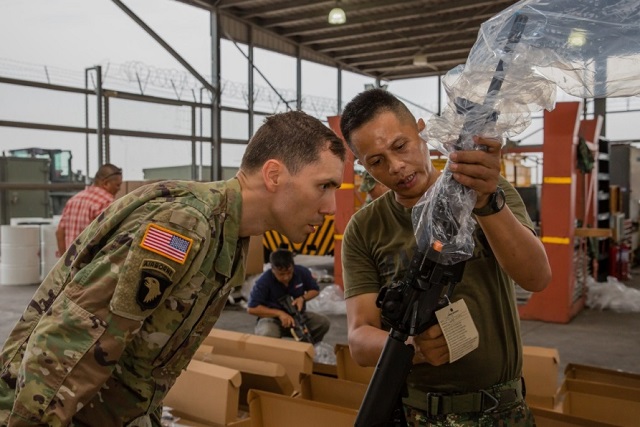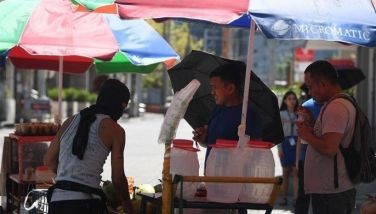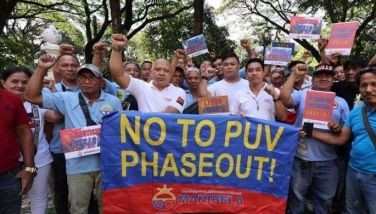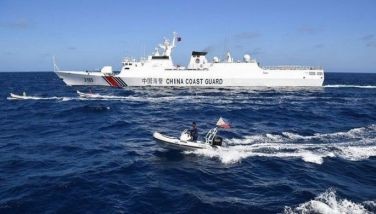US intensifies anti-terrorism ops in the Philippines with new military mission — report

MANILA, Philippines — Washington has reportedly stepped up its military cooperation with the Philippines by launching a new assistance mission here that would allow the Southeast Asian nation to receive the same appropriation used in funding US counterterrorism operations in the Middle East.
The Pentagon had reportedly renamed its anti-terrorism mission in the Philippines from “Operation Enduring Freedom-Philippines” to “Operation Pacific Eagle,” marking a new phase of counterterrorism efforts here and in the region.
According to a report by the Wall Street Journal (WSJ), the intensified US military mission here started last September after the Philippine government requested for more assistance in defeating ISIS-backed militants that laid siege to the principal Islamic city of Marawi.
Being an Overseas Contingency Operation, or OCO, funds for the new US mission in the Philippines, the WSJ explained, typically are exempt from “limits on routine spending” and have financed US wars on terror.
However, it was not clear why the Trump administration did not announce the ramped up US mission at the time it was launched.
“The Philippines and United States governments remain steadfast in their alliance and are committed to countering radicalization and violent extremism in the Philippines and Southeast Asia,” Marine Lt. Col. Christopher Logan, a Pentagon spokesman, was quoted as saying in a report by Military Times.
“To support these efforts, and at the request of the government of the Philippines, we have enhanced our comprehensive counterterrorism cooperation that supports the Philippine Security Forces,” Logan added.
Information from the Defense Manpower Data Center show that there were a total of 101 American troops, mostly Marines, deployed in the Philippines as of Sept. 30, 2017.
Philippine President Rodrigo Duterte imposed martial law in the restive southern region of Mindanao on the day Marawi was stormed by heavily-armed homegrown extremists who pledged allegiance to ISIS.
According to a Philippines military spokesman, US troops were on the ground near Marawi City but were not involved in fighting Islamist militants.
In a rousing address to troops last October, Duterte declared Marawi liberated from pro-ISIS extremists after five months of fighting that gave state forces, who have far more experience in jungle combat, their first taste of urban warfare.
But Duterte had warned about continuing threats of ISIS, saying militants who escaped the battle were actively recruiting those who were displaced by the fighting to carry out future assaults.
Following its initial P730 million assistance for the rehabilitation of Marawi City, the US government early this month announced an additional P330 million fund for the war-torn city.
Future military assistance
In the same report, the WSJ said funds for Pacific Eagle Philippines will be used to enhance “military and aid efforts” to combat terrorism and "to prevent ISIS from getting a foothold in Southeast Asia.”
The WSJ, citing US officials, also reported that while the potential scale of future military assistance is yet to be known, the coverage of Pacific Eagle Philippines could stretch “depending on the situation on the ground.”
“This reflect the significance of the threat and the desire on the part of the US government to get ahead pf the problem, not wait until it more fully metastasizes,” Joe Felter, deputy assistant secretary of defense for South and Southeast Asia, was quoted as saying by the WSJ.
The Marawi siege was “somewhat of a wake-up call,” Felter added.
To recall, the US had a special operations mission in Mindanao as part of Operation Enduring Freedom–Philippines. In May 2015, Washington announced it would close its mission in the insurgency-plagued region.
“Some US officials have speculated that halting the previous mission was a mistake because it led vacuum that allowed Islamic State to expand and eventually capture Marawi,” the WSJ said.
- Latest
- Trending




























